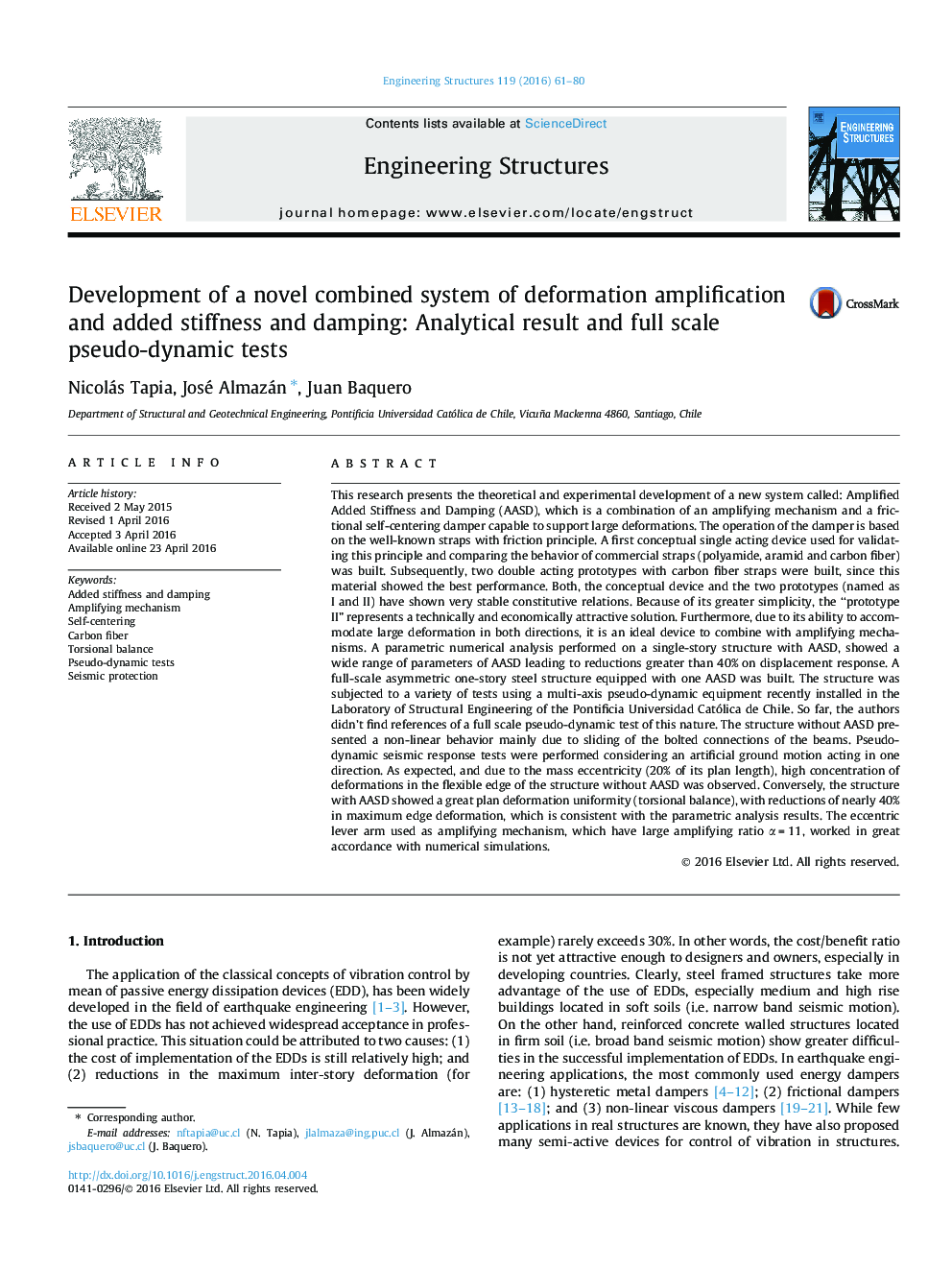| کد مقاله | کد نشریه | سال انتشار | مقاله انگلیسی | نسخه تمام متن |
|---|---|---|---|---|
| 265755 | 504327 | 2016 | 20 صفحه PDF | دانلود رایگان |
Highlight
• In this study the theoretical and experimental development of a new system called: Amplified Added Stiffness and Damping (AASD). As the name suggest, the system is composed of a deformation amplification mechanism (lever-arm type) and stiffening–damping self-centering device. The operation of the device is based on the well-known straps with friction principle. The work is divided in four parts: (1) main ideas and proof of concept testing of the damper device; (2) developing and testing of two prototypes; (3) numerical parametric analysis of a single-story structure with AASD; and (4) pseudo-dynamic tests of a full scale asymmetric one story steel structure. The main hypothesis of this work is that the AASD is an efficient alternative for structures based on frames, as well as, and especially in structures based on reinforced concrete walls (typical building in Chile), where the relatively small story-drift makes it difficult to introduce energy dissipation devices.
This research presents the theoretical and experimental development of a new system called: Amplified Added Stiffness and Damping (AASD), which is a combination of an amplifying mechanism and a frictional self-centering damper capable to support large deformations. The operation of the damper is based on the well-known straps with friction principle. A first conceptual single acting device used for validating this principle and comparing the behavior of commercial straps (polyamide, aramid and carbon fiber) was built. Subsequently, two double acting prototypes with carbon fiber straps were built, since this material showed the best performance. Both, the conceptual device and the two prototypes (named as I and II) have shown very stable constitutive relations. Because of its greater simplicity, the “prototype II” represents a technically and economically attractive solution. Furthermore, due to its ability to accommodate large deformation in both directions, it is an ideal device to combine with amplifying mechanisms. A parametric numerical analysis performed on a single-story structure with AASD, showed a wide range of parameters of AASD leading to reductions greater than 40% on displacement response. A full-scale asymmetric one-story steel structure equipped with one AASD was built. The structure was subjected to a variety of tests using a multi-axis pseudo-dynamic equipment recently installed in the Laboratory of Structural Engineering of the Pontificia Universidad Católica de Chile. So far, the authors didn’t find references of a full scale pseudo-dynamic test of this nature. The structure without AASD presented a non-linear behavior mainly due to sliding of the bolted connections of the beams. Pseudo-dynamic seismic response tests were performed considering an artificial ground motion acting in one direction. As expected, and due to the mass eccentricity (20% of its plan length), high concentration of deformations in the flexible edge of the structure without AASD was observed. Conversely, the structure with AASD showed a great plan deformation uniformity (torsional balance), with reductions of nearly 40% in maximum edge deformation, which is consistent with the parametric analysis results. The eccentric lever arm used as amplifying mechanism, which have large amplifying ratio α = 11, worked in great accordance with numerical simulations.
Journal: Engineering Structures - Volume 119, 15 July 2016, Pages 61–80
